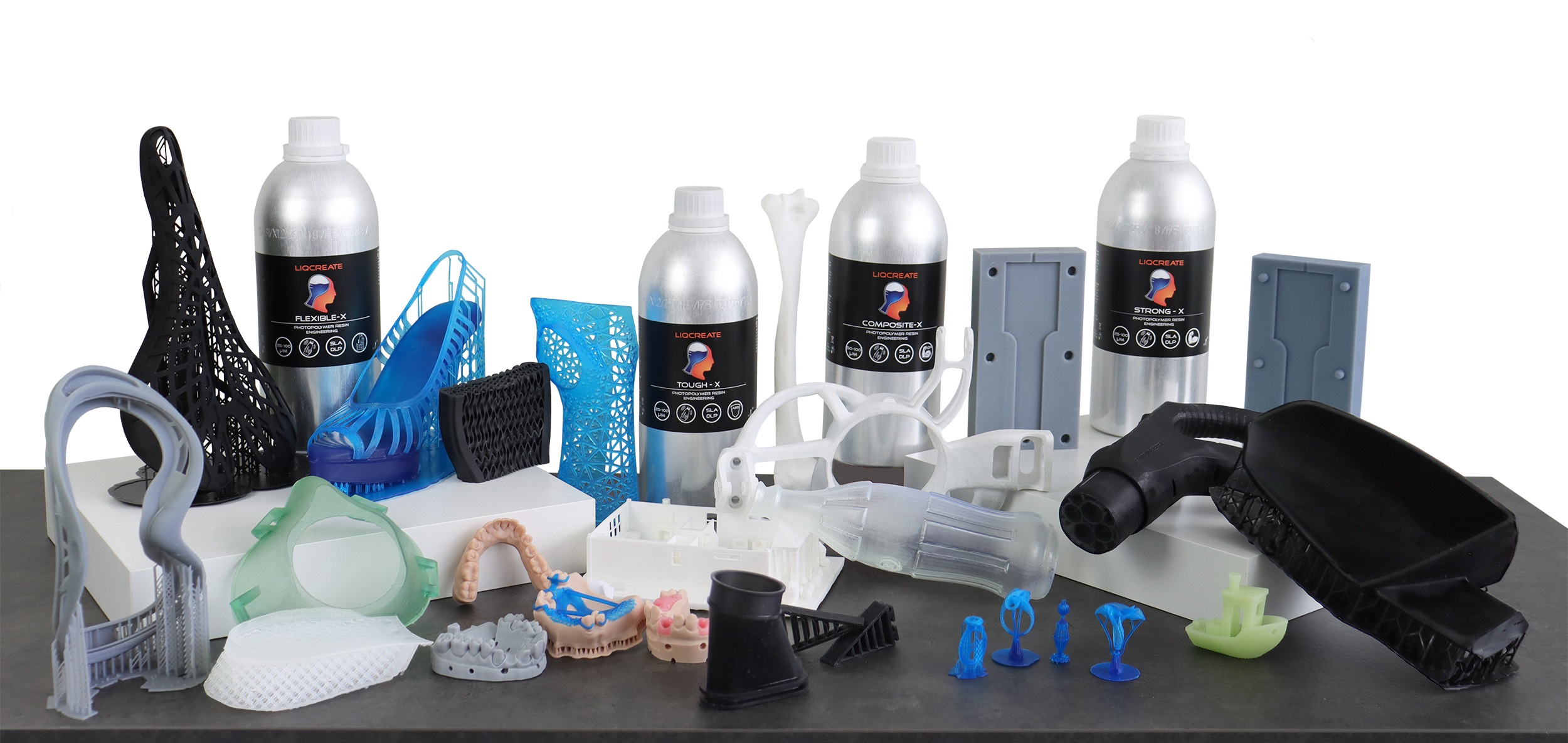There are three main techniques for 3D-printing plastic materials. These are FDM, SLS and resin 3D-printing. The differences in these techniques can be found in the links above. All techniques have their own advantages, type of materials and disadvantages. The differences in material choices for each 3D-printing technique is explained in this article. Learn more about resin vs filament 3D-printing in the link. All these different printing techniques use a different type of plastic. SLA resins are always based on thermosetting materials.
What are thermoset plastics?
In the field of plastics you have two main types, thermoplastics and thermosetting. Thermoplastics are well known like ABS, PP, PC, Polyamide and many other types. These represent a class of materials that form one chain of polymers and can be melted. Thermoset materials are a little bit different. Thermosetting type of plastics form cross-links during polymerization. These cross-links will change the nature of the plastics. Usually the plastics get more rigid and a bit more brittle. Additionally, due to the cross-links the thermal behavior or the resin changes. After curing thermoset plastics won’t melt, but they will simply burn at elevated temperatures. This makes molding in its final form not possible anymore.
Comparing SLA, DLP and MSLA resin to filament and thermoplastics.
Although it is nearly impossible to compare due to the different nature of the polymers, some properties can be compared. 3D-printing resin uses different building blocks and chemistry compared to PLA or other thermoplastic materials, it is difficult to find a 1 on 1 drop-in replacement. However, some properties can be mimicked in resin. See the comparison below with data obtained from Ultimaker materials by Farnell. The NatureWorks Ingeo Biopolymer 3052D (PLA) was chosen as reference for injection molded PLA.
Table: Comparing properties of 3D-printed PLA to photopolymer resins.
| Properties | PLA (3D-printed) | PLA (Injection molded) | Deep Blue | Strong-X |
| Tensile modulus | 2,35 GPa | – | 2,6 GPa | 3,1 – 3,4 GPa |
| Tensile strength | 49,5 MPa | 62 MPa | 73 MPa | 60 – 84 MPa |
| Elongation at break | 5,2% | 3,5% | 5% | 3 – 6% |
| IZOD Impact strength (notched) | – | 16 J/m | 22 J/m | 17 J/m |
| IZOD Impact strength (notched) | 5,1 kJ/m2 | – | – | – |
| Flexural strength | 103 MPa | 108 MPa | 82 MPa | 134 – 140 MPa |
| Flexural modulus | 3,15 GPa | 3,6 GPa | 1,9 GPa | 3,3 – 3,5 GPa |
More comparisons of 3D-printing resin (thermoset) with thermoplastics, filaments and SLS powders can be found in the link. Meanwhile, if you have any questions or need help with selecting the right material or with 3D-printing Liqcreate resins, feel free to send us an e-mail at info@liqcreate.com.
Support
Do you need any help with 3D printing our SLA, DLP or LCD resins? We can help you! Just look for the question you have below. If you can’t find it, let us know by contacting us!



